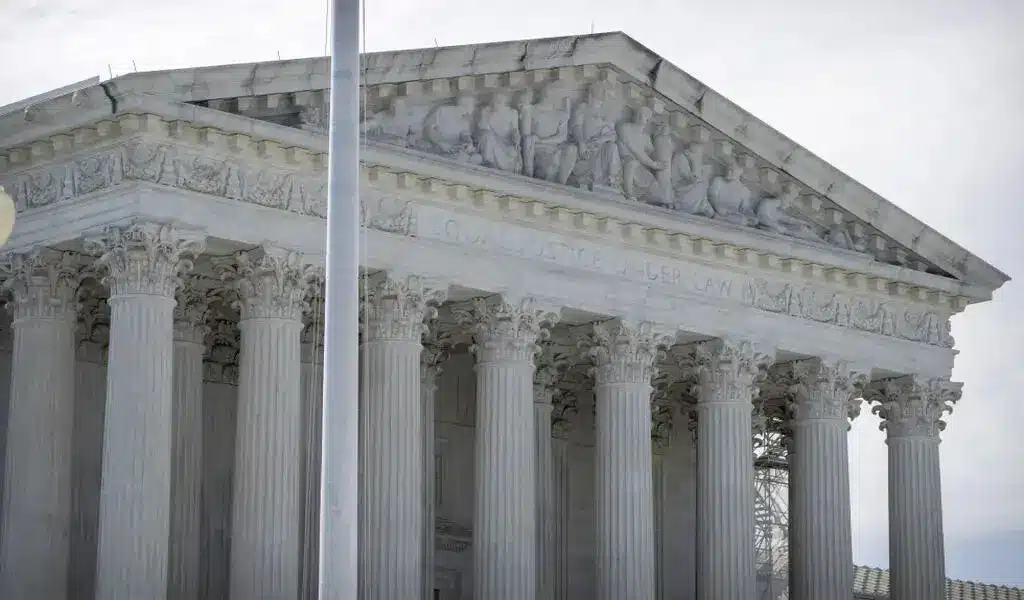News
School Closures Force Migrant Children Labour in Thailand’s Seafood Industry

In August 2019, migrant teachers were arrested and deported from Ranong leaving 2,800 migrant children without an education. This event has been called the ‘Ranong Raid’ by local media. It has also captured NGO’s and Human Rights Advocates attention within Thailand. Advocates say the school closures have driven many former pupils into Thailand’s illegal seafood industry jobs.
Chit Su has been stuck at home peeling crabs with her grandmother since her school for Burmese migrants closed last year in southern Thailand. Even working together, they make less than a daily minimum wage.
“This is hard work… if I study I’ll get to do a job that’s less tough,” said Chit Su, 15, whose name has been changed to protect her identity. “But now, if I don’t help my grandma, we won’t have any money.”
She and her grandmother earn 240 baht ($7.60) a day – less than the 315-baht minimum in Ranong, and a drop in the ocean as they try to clear the family’s 8,000-baht debt.
Educational centres close over fear
Chit Su is among some 2,800 migrant children who have been affected by the raid on her migrant learning centre, Ranonghtarni, which led to the arrest of more than 30 Burmese teachers and forced the school to close.
Nine other educational centres funded by charities and private donors in Ranong halted classes soon afterwards, fearing they could also be raided. One has since reopened.
The Education Ministry said it was tracking down former pupils who are still not attending classes in order to enroll them in public schools, non-formal education programs and community learning centres.
Like Chit Su, many of the former students now work at private fish markets or at home shelling crabs for a multi-billion dollar industry that has faced global scrutiny in recent years over the abuse of Thai and migrant workers.
Reuters interviewed 11 child workers in Ranong who were working in the industry without permits.
Children’s rights campaigners said the school closures had drawn many migrant schoolchildren into illegal, low-paid work just as the COVID-19 pandemic raises the risk of child labour.
“The consequences (of the closures) were much more severe (than the officials) predicted – it resulted in child labour in the fishing industry,” said Adisorn Kerdmongkol, coordinator at the Migrant Working Group, a network of NGOs helping migrants. “This is worrying… and made worse with COVID-19,” he added.
Myanmar migrants work from home
Millions of children worldwide could be pushed into work as schools remain shut and families struggle to survive the economic fallout of COVID-19, the United Nations has warned.
In Thailand, the pandemic has led to a shift from seafood processing at factories or peeling sheds towards home-based work. Often done by migrants, according to activists.
In one mainly Burmese neighborhood in Ranong’s Muang district, children as young as 10 used sharp tools to help their families shell crabs brought each day by Seafood Industry suppliers.
Besides a ban on under 18s undertaking hazardous work, children aged below 15 are banned from all labour in Thailand.
The Thai Labour Ministry does not specifically list Seafood Industry processing as hazardous work but children’s rights campaigners said it falls into the category. Two labour lawyers said it depends on what exactly the job involves.
But despite the country’s laws, 177,000 children aged five to 17 work as labourers in Thailand – three quarters in hazardous jobs, a 2018 survey by the government and the United Nations showed.
Still, the head of one of the main bodies representing Thai seafood producers said the industry was more concerned about forced labour than child labour.
“That Burmese children are out of school and are working is a way for them to survive,” said Panisuan Jamnarnwej, honorary president of the Thai Frozen Foods Association.
The Department of Labour Protection and Welfare declined to comment, while Ranong’s provincial administration did not respond to repeated requests for comment.
Children learning in migrant camps
It is not clear how many migrant learning centres operate because most are not registered, the Education Ministry said. They are not funded by the government and in most areas children are taught in their own language as opposed to Thai.
Since the closure of the centres in Ranong, some of the children have already enrolled in Thai public schools. While others are studying in non-formal education systems such as learning in migrant camps, according to Save the Children.
But the charity estimated that up to 500 of them have dropped out of education altogether.
Across Thailand, migrant children often drop out of school between 10 and 12, mostly due to financial constraints, according to the International Organisation for Migration (IOM).
“Migrant children constitute the largest group of children out of school in Thailand,” said Maria Moita, IOM’s acting chief of mission to Thailand, putting the number at about 200,000.
Of the 10 learning centres that closed, only one managed by the Marist Asia Foundation has reopened after getting work permits for Burmese teachers and adding a Thai curriculum.
“The government is not doing anything to help these children. It’s like we’re abandoning them,” said Prasit Rugklin, the charity’s secretary.
Migrant children wish for school
At the Education Ministry, however, a senior official said authorities “will not abandon these children”.
“I have informed the minister and permanent secretary about the needs of (these children), and they are very concerned,” said Wira Khaengkasikarn, the ministry’s deputy permanent secretary.
Var Say Hta, a Burmese monk who manages Ranonghtarni – which had more than 1,100 students before the raid – said at least 150 former students aged 15 or over are now working.
Another of the school’s former students – 17-year-old Soe Win – works 12 hours a day at a private fish market now.
He earns 300 baht per day, gets two days off a month and spends his hours packing ice into boxes of fish and loading them onto trucks. School would be better, he said.
“The problem is, only my mum is working because my dad’s paralysed,” said Soe Win, whose name has been changed to protect his identity. “I want to study because it’s more fun at school.” – Reuters

News
Google’s Search Dominance Is Unwinding, But Still Accounting 48% Search Revenue

Google is so closely associated with its key product that its name is a verb that signifies “search.” However, Google’s dominance in that sector is dwindling.
According to eMarketer, Google will lose control of the US search industry for the first time in decades next year.
Google will remain the dominant search player, accounting for 48% of American search advertising revenue. And, remarkably, Google is still increasing its sales in the field, despite being the dominating player in search since the early days of the George W. Bush administration. However, Amazon is growing at a quicker rate.
Google’s Search Dominance Is Unwinding
Amazon will hold over a quarter of US search ad dollars next year, rising to 27% by 2026, while Google will fall even more, according to eMarketer.
The Wall Street Journal was first to report on the forecast.
Lest you think you’ll have to switch to Bing or Yahoo, this isn’t the end of Google or anything really near.
Google is the fourth-most valued public firm in the world. Its market worth is $2.1 trillion, trailing just Apple, Microsoft, and the AI chip darling Nvidia. It also maintains its dominance in other industries, such as display advertisements, where it dominates alongside Facebook’s parent firm Meta, and video ads on YouTube.
To put those “other” firms in context, each is worth more than Delta Air Lines’ total market value. So, yeah, Google is not going anywhere.
Nonetheless, Google faces numerous dangers to its operations, particularly from antitrust regulators.
On Monday, a federal judge in San Francisco ruled that Google must open up its Google Play Store to competitors, dealing a significant blow to the firm in its long-running battle with Fortnite creator Epic Games. Google announced that it would appeal the verdict.
In August, a federal judge ruled that Google has an illegal monopoly on search. That verdict could lead to the dissolution of the company’s search operation. Another antitrust lawsuit filed last month accuses Google of abusing its dominance in the online advertising business.
Meanwhile, European regulators have compelled Google to follow tough new standards, which have resulted in multiple $1 billion-plus fines.

Pixa Bay
Google’s Search Dominance Is Unwinding
On top of that, the marketplace is becoming more difficult on its own.
TikTok, the fastest-growing social network, is expanding into the search market. And Amazon has accomplished something few other digital titans have done to date: it has established a habit.
When you want to buy anything, you usually go to Amazon, not Google. Amazon then buys adverts to push companies’ products to the top of your search results, increasing sales and earning Amazon a greater portion of the revenue. According to eMarketer, it is expected to generate $27.8 billion in search revenue in the United States next year, trailing only Google’s $62.9 billion total.
And then there’s AI, the technology that (supposedly) will change everything.
Why search in stilted language for “kendall jenner why bad bunny breakup” or “police moving violation driver rights no stop sign” when you can just ask OpenAI’s ChatGPT, “What’s going on with Kendall Jenner and Bad Bunny?” in “I need help fighting a moving violation involving a stop sign that wasn’t visible.” Google is working on exactly this technology with its Gemini product, but its success is far from guaranteed, especially with Apple collaborating with OpenAI and other businesses rapidly joining the market.
A Google spokeswoman referred to a blog post from last week in which the company unveiled ads in its AI overviews (the AI-generated text that appears at the top of search results). It’s Google’s way of expressing its ability to profit on a changing marketplace while retaining its business, even as its consumers steadily transition to ask-and-answer AI and away from search.

Google has long used a single catchphrase to defend itself against opponents who claim it is a monopoly abusing its power: competition is only a click away. Until recently, that seemed comically obtuse. Really? We are going to switch to Bing? Or Duck Duck Go? Give me a break.
But today, it feels more like reality.
Google is in no danger of disappearing. However, every highly dominating company faces some type of reckoning over time. GE, a Dow mainstay for more than a century, was broken up last year and is now a shell of its previous dominance. Sears declared bankruptcy in 2022 and is virtually out of business. US Steel, long the foundation of American manufacturing, is attempting to sell itself to a Japanese corporation.
SOURCE | CNN
News
2024 | Supreme Court Won’t Hear Appeal From Elon Musk’s X Platform Over Warrant In Trump Case

Washington — Trump Media, The Supreme Court announced Monday that it will not hear an appeal from social media platform X about a search warrant acquired by prosecutors in the election meddling case against former President Donald Trump.
The justices did not explain their rationale, and there were no recorded dissents.
The firm, which was known as Twitter before being purchased by billionaire Elon Musk, claims a nondisclosure order that prevented it from informing Trump about the warrant obtained by special counsel Jack Smith’s team violated its First Amendment rights.
The business also claims Trump should have had an opportunity to exercise executive privilege. If not reined in, the government may employ similar tactics to intercept additional privileged communications, their lawyers contended.
Supreme Court Won’t Hear Appeal From Elon Musk’s X Platform Over Warrant In Trump Case
Two neutral electronic privacy groups also joined in, urging the high court to hear the case on First Amendment grounds.
Prosecutors, however, claim that the corporation never shown that Trump utilized the account for official purposes, therefore executive privilege is not a problem. A lower court also determined that informing Trump could have compromised the current probe.

Trump utilized his Twitter account in the weeks preceding up to his supporters’ attack on the Capitol on January 6, 2021, to spread false assertions about the election, which prosecutors claim were intended to create doubt in the democratic process.
The indictment describes how Trump used his Twitter account to encourage his followers to travel to Washington on Jan. 6, pressuring Vice President Mike Pence to reject the certification, and falsely claiming that the Capitol crowd, which battered police officers and destroyed glass, was peaceful.
Supreme Court Won’t Hear Appeal From Elon Musk’s X Platform Over Warrant In Trump Case
That case is now moving forward following the Supreme Court’s verdict in July, which granted Trump full immunity from criminal prosecution as a former president.
The warrant arrived at Twitter amid quick changes implemented by Musk, who bought the company in 2022 and has since cut off most of its workforce, including those dedicated to combating disinformation and hate speech.
SOURCE | AP
News
The Supreme Court Turns Down Biden’s Government Appeal in a Texas Emergency Abortion Matter.

(VOR News) – A ruling that prohibits emergency abortions that contravene the Supreme Court law in the state of Texas, which has one of the most stringent abortion restrictions in the country, has been upheld by the Supreme Court of the United States. The United States Supreme Court upheld this decision.
The justices did not provide any specifics regarding the underlying reasons for their decision to uphold an order from a lower court that declared hospitals cannot be legally obligated to administer abortions if doing so would violate the law in the state of Texas.
Institutions are not required to perform abortions, as stipulated in the decree. The common populace did not investigate any opposing viewpoints. The decision was made just weeks before a presidential election that brought abortion to the forefront of the political agenda.
This decision follows the 2022 Supreme Court ruling that ended abortion nationwide.
In response to a request from the administration of Vice President Joe Biden to overturn the lower court’s decision, the justices expressed their disapproval.
The government contends that hospitals are obligated to perform abortions in compliance with federal legislation when the health or life of an expectant patient is in an exceedingly precarious condition.
This is the case in regions where the procedure is prohibited. The difficulty hospitals in Texas and other states are experiencing in determining whether or not routine care could be in violation of stringent state laws that prohibit abortion has resulted in an increase in the number of complaints concerning pregnant women who are experiencing medical distress being turned away from emergency rooms.
The administration cited the Supreme Court’s ruling in a case that bore a striking resemblance to the one that was presented to it in Idaho at the beginning of the year. The justices took a limited decision in that case to allow the continuation of emergency abortions without interruption while a lawsuit was still being heard.
In contrast, Texas has been a vocal proponent of the injunction’s continued enforcement. Texas has argued that its circumstances are distinct from those of Idaho, as the state does have an exemption for situations that pose a significant hazard to the health of an expectant patient.
According to the state, the discrepancy is the result of this exemption. The state of Idaho had a provision that safeguarded a woman’s life when the issue was first broached; however, it did not include protection for her health.
Certified medical practitioners are not obligated to wait until a woman’s life is in imminent peril before they are legally permitted to perform an abortion, as determined by the state supreme court.
The state of Texas highlighted this to the Supreme Court.
Nevertheless, medical professionals have criticized the Texas statute as being perilously ambiguous, and a medical board has declined to provide a list of all the disorders that are eligible for an exception. Furthermore, the statute has been criticized for its hazardous ambiguity.
For an extended period, termination of pregnancies has been a standard procedure in medical treatment for individuals who have been experiencing significant issues. It is implemented in this manner to prevent catastrophic outcomes, such as sepsis, organ failure, and other severe scenarios.
Nevertheless, medical professionals and hospitals in Texas and other states with strict abortion laws have noted that it is uncertain whether or not these terminations could be in violation of abortion prohibitions that include the possibility of a prison sentence. This is the case in regions where abortion prohibitions are exceedingly restrictive.
Following the Supreme Court’s decision to overturn Roe v. Wade, which resulted in restrictions on the rights of women to have abortions in several Republican-ruled states, the Texas case was revisited in 2022.
As per the orders that were disclosed by the administration of Vice President Joe Biden, hospitals are still required to provide abortions in cases that are classified as dire emergency.
As stipulated in a piece of health care legislation, the majority of hospitals are obligated to provide medical assistance to patients who are experiencing medical distress. This is in accordance with the law.
The state of Texas maintained that hospitals should not be obligated to provide abortions throughout the litigation, as doing so would violate the state’s constitutional prohibition on abortions. In its January judgment, the 5th United States Circuit Court of Appeals concurred with the state and acknowledged that the administration had exceeded its authority.
SOURCE: AP
SEE ALSO:
Could Last-Minute Surprises Derail Kamala Harris’ Campaign? “Nostradamus” Explains the US Poll.
-

 News4 years ago
News4 years agoLet’s Know About Ultra High Net Worth Individual
-
Entertainment2 years ago
Mabelle Prior: The Voice of Hope, Resilience, and Diversity Inspiring Generations
-
News11 years ago
Enviromental Groups Tell Mekong Leaders Lao Dam Evaluation Process Flawed
-

 Health4 years ago
Health4 years agoHow Much Ivermectin Should You Take?
-

 Tech3 years ago
Tech3 years agoTop Forex Brokers of 2023: Reviews and Analysis for Successful Trading
-

 Lifestyles3 years ago
Lifestyles3 years agoAries Soulmate Signs
-

 Entertainment3 years ago
Entertainment3 years agoWhat Should I Do If Disney Plus Keeps Logging Me Out of TV?
-

 Health3 years ago
Health3 years agoCan I Buy Ivermectin Without A Prescription in the USA?


